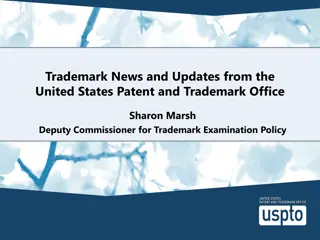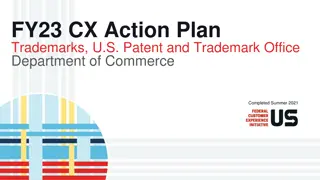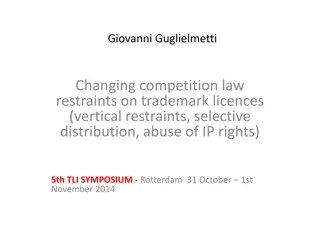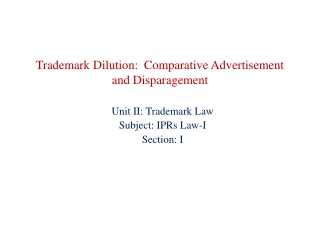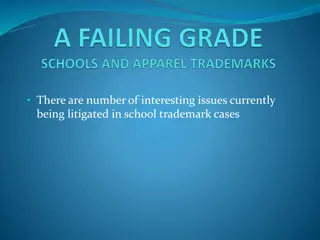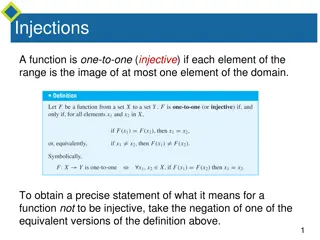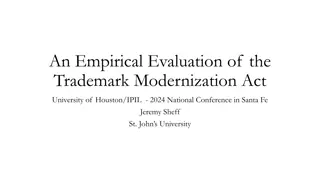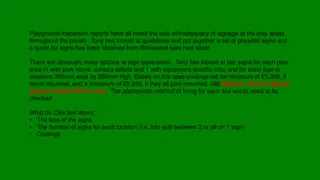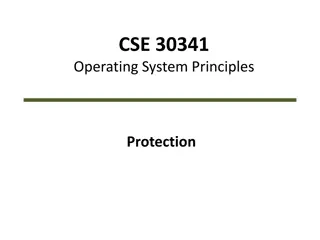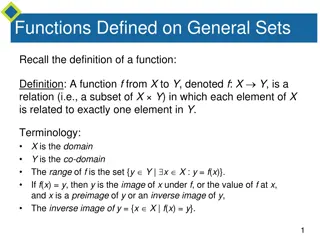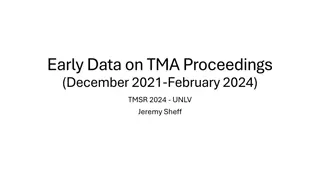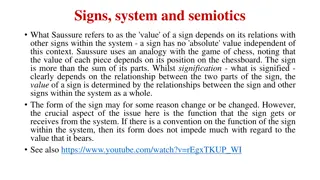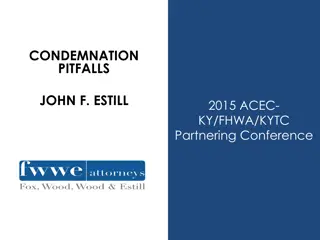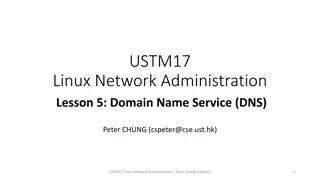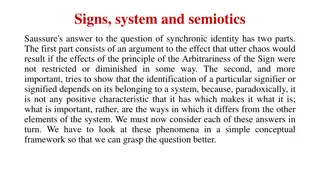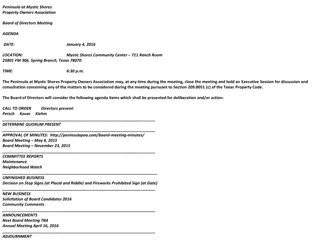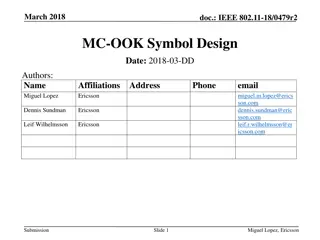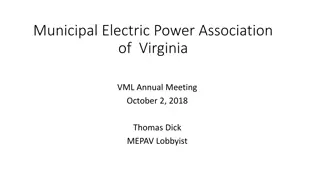Trademark Owners' Power and Public Domain Signs
The research explores how trademark owners can influence the meaning of signs that belong to the public domain, focusing on the EU trademark law system. It discusses the acquisition of distinctiveness through trade use, challenges, and consequences of exclusive trademark rights, supported by examples and case law.
Download Presentation

Please find below an Image/Link to download the presentation.
The content on the website is provided AS IS for your information and personal use only. It may not be sold, licensed, or shared on other websites without obtaining consent from the author. Download presentation by click this link. If you encounter any issues during the download, it is possible that the publisher has removed the file from their server.
E N D
Presentation Transcript
WIPO Advanced IP Research Forum May 26-28, 2014 The power of trademark owners to misappropriate signs Lotte Anemaet LLM MA VU University Amsterdam
Outline Example of human behaviour Research problem: the possibility of acquiring distinctiveness through use in trade Four examples Empirical research Counterarguments Discussion
Research problem Trademark owners have the possibility to dictate the meaning of signs that actually belong to the public domain. EU trademark law system offers too much space to the trademark owner. Problem: possibility of acquiring distinctiveness through use in trade.
L.P. Ramsey, Descriptive trademarks and the First amendment , Tenn. L. Rev. 2002- 2003, 70, p. 1150: circular reasoning underlies the argument that confusing use of a descriptive term as a mark is misleading and can therefore be restricted to protect consumers. By granting and enforcing exclusive rights in descriptive marks, the government helps to make those marks source-identifying, which leads to the possibility of consumer confusion in the first place.
Consequences Monopoly positions lead to additional social costs Competitors can no longer use identical or similar signs Trademark rights could have a deterrent effect Exclusive rights to signs could lead to an unfair start Ramsey, at 1157-1158: Rather, a descriptive mark with secondary meaning signifies both a description of the product and a single source of the product.
First example Nike, the goddess of victory Trademark Nike
Third example A clever trademark owner: Telecommunication company Orange
Fourth example Attaca - Hans Liberg Dutch comedian Hans Liberg
Case law Colours and shapes need the possibility of acquiring distinctiveness through use in trade Henkel: Average consumers are not in the habit of making assumptions about the origin of goods based on the shape of their packaging, in the absence of any graphic or word element. (CJEU, judgment of February 12, 2004, Case C-218/01, Henkel, para. 52) Shape or a colour per se have to meet higher standards Despite: CJEU, judgment April 8, 2003, Case C-53/01-C- 55/01, Linde
Case law Libertel: It must therefore be acknowledged that there is, in Community trademark law, a public interest in not unduly restricting the availability of colours for the other operators who offer for sale goods or services of the same type as those in respect of which registration is sought. CJEU, judgment May 6, 2003, Case C-104/01, Libertel, para. 55. See also: CJEU, judgment June 24, 2004, Case C-49/02, Heidelberger Bauchemie. The CJEU may use an actual assumption to reach a normative purpose
Consumer perception Consumers wish to have a perception that leads to a quick recognition of the product The stronger the trademark, the faster the consumer can decide Knowledge that is stored in human memory, that is a cognitive network of nodes When activating memory, a node lights up, which activates not only this specific information, but also the surrounding nodes it is linked to
Consumer perception A trademark needs to have strong, positive and unique associations 1. Strong: Depends on quantity and quality of product information
Consumer perception 2. Positive: Depends on affective reactions to the object Mere exposure effect : the mere repeated exposure of an individual to a stimulus object will enhance his attitude towards it It might even occur after subliminally perception Conditioning process: by choosing positive words or pleasant music or by using attractive images 3. Unique
Importancy of colours Eyes are very sensitive sensory organs People can perceive a difference in brightness of less than two per cent! Colours are a good tool foor remembering Colours are needed to read texts! Colours are easy to perceive and clearly visible from a distance People with difficulties to read can perceive colours very well
Conclusion A real threat exists Trademark owners may influence the perception of the consumer Trademark owners could educate consumers to perceive signs as identifiers of commercial source The possibility of acquiring distinctiveness could be problematic
Arguments contra Associations and goodwill are also created by the consumers and the public The public has to accept the sign in their community, if the sign is to survive Communication is a two-way process! See for example: Picasso/Picaro CJEU, judgment January 17, 2006, Case C-361/04P
Arguments contra Research Dev. S. Gangjee, Property in Brands , LSE Working Papers 8/2013 CJEU uncritical embrace of the brand dimension of reputed mark is a cause for concern. Current research views consumers and other intermediaries as active partners or co-creators of brand significance. (at 26) See for example: L Or al/Bellure CJEU, judgment June 18, 2009, Case C-487/07
Arguments contra [Where] a third party attempts, through the use of a sign similar to a mark with a reputation, to ride on the coat-tails of that mark in order to benefit from its power of attraction, its reputation and its prestige, and to exploit, without paying any financial compensation and without being required to make efforts of his own in that regard, the marketing effort expended by the proprietor of that mark in order to create and maintain the image of that mark, the advantage resulting from such use must be considered to be an advantage that has been unfairly taken of the distinctive character or the repute of that mark.
The end. contact: l.anemaet@vu.nl


